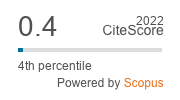Stinging apparatus of apoid wasps and bees as never seen before
DOI:
https://doi.org/10.33307/entomon.v45i2.516Abstract
The stinging apparatus is expected to vary depending on the type of prey taken and the way it is carried in apoid wasps and the purpose of defense it serves in bees. To understand the differences in sting morphology, members of two apoid wasp families (Ampulicidae and Crabronidae) and a bee family (Halictidae) were studied. Scanning Electron Microscope images of lancets revealed tooth like projections on dorso-lateral aspect in Ampulex compressa (Fabricius, 1781) and blunt barbs on the lancets of Liris aurulentus (Fabricius, 1787) and Tachysphex bengalensis Cameron, 1889 whereas, in Halictus fimbriatellus Vachal, 1894 barbs are arranged in two rows on lancet, which includes four barbs on one side and three barbs on the other side of lancet which are not acutely pointed. The SEM images also indicated the presence of campaniform sensilla on the lancets of compressa. These findings help us to know the possible relationships of hunting behavior and modification of the sting in accordance.


